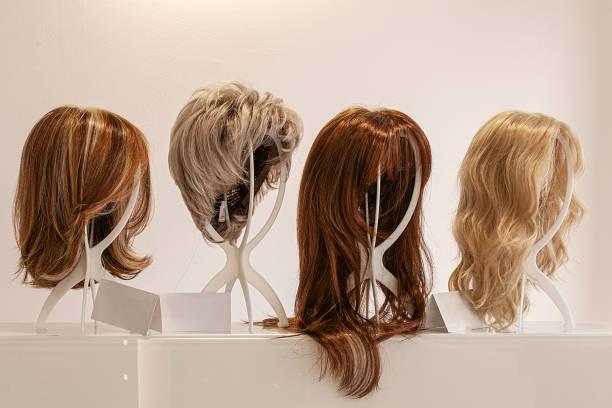
Hair Transplant & Hair System, which one is better?
Here comes one of the most frequently asked questions. Which one is better? A hair transplant or a hair replacement system? To be honest and objective at the same time, I’m not going to oblige myself to show favor to either of them. They both have pros and cons. In this post, I’m going to list all of them, so you can choose to get the best solution for your case. All information in this post is collected from the world’s top hair specialists to feed hair loss sufferers with the most accurate and comprehensive information to help them make the best choice for their hair.
Hair Replacement Systems
When comparing hair replacement systems and transplants, we won’t bother ourselves with hair extensions or fashion wigs that help women add extra points to their glam. Our focus here is on the hair loss population and trying to help them find solutions. So hair systems we talk about here are purely used to cover their baldness.
Let’s start with
Cons:
The average lifespan of the hairpiece is around three months. That means from the day you buy it to the day you can’t use it anymore, and you have to chuck it in a bin is about three months (Many hair systems with a solid base could last up to 12 months with good care).
Hair replacement systems are only temporary. For all sorts of hair systems, they can put it on, the wearer has to get his hair around the hairline and the crown areas shaven, cleaned, and then the stylist can glue the hairpiece on for him.
Once put on, the wearer’s scalp will keep generating oil and sweat, and his natural hair will continue its growth underneath. So that the hairpiece will get loose and less sticky as time goes by. To tackle that, the wearer must regularly consult a hairstylist for weekly touch-ups. Besides the weekly touch-ups, about every 20 days, the hairpiece will likely fall off, and the wearer has to visit a stylist to get it reinstalled. Of course, this process is for glue-on hair systems. With clip-on ones, the wearer has to take them off before bed and put them on the following day. Instead of doing a weekly touch-up, the wearer must also do major maintenance every 25 days.
Pros:
As proved by numerous hair specialists, the processes of putting on and taking off non-surgical hair replacement systems are 100% pain-free. The wearer needs to get his head (normally frontal and the crown areas) shaven, and the stylist will glue or clip the hairpiece on him. Then it’s done.
Slowly, you lose your confidence as your hair slowly sheds. Most hair systems are made of 100% human hair. They can be tailor-made to meet your desired density. Hair systems are for you to look like you haven’t lost any hair at all. They are supposed to blend perfectly with your natural hair and create the illusion that this guy has a full head of lush hair. Even looking into your scalp, they can’t tell you’re wearing a hairpiece. That’s exactly what hair systems are made for.
Check out New Times Hair website to explore non-surgical hair replacement solutions: https://www.newtimeshair.com/
Hair Transplants
Now let’s look at hair transplants. According to millions of hair specialists, hair transplants are not for everyone. Half of the hair loss population can’t undergo hair transplant surgery on their scalp.
Cons:
The person’s remaining hair must be 100% healthy to undergo a hair transplant. A hair transplant is about having the scalp from a hair-rich section of the head grafted and replanted to a hair-deficit zone. However, no hair surgeon can guarantee the hair will germinate through the transplanted scalp after the surgery.
Even if the person’s hair is 100% healthy, that doesn’t mean that a hair transplant will help him realize his desired looks. For example, 80% of your scalp from the front to your crown is hairless. Your temples and back, starting from the nape, have hair, which only covers up to 20% of the total area of your scalp. How can the 20% of the scalp that has hair help out the hairless desert, which covers 80% of the scalp? Impossible.
The harsh requirement of making a hair transplant possible is that the person only has a small area of the scalp that’s bald, and the other regions have plenty of hair.
Even if the person does have enough hair on his temples and the back of his head, it is still unguaranteed that he can get his desired density. Say his desired look is to have a luscious full head of hair, covering his entire front and the crown. But the hair on his temples and back of his head is relatively sparse. In this case, the grafted hair will also be light. He still wouldn’t get his desired look.
Furthermore, a hair transplant generally takes 10-14 days to secure the grafted scalp. Plus, hair gets injected into the follicles one by one. In the process, a lot of pain and bleeding are unavoidable.
Pros:
For the limited population of those who can get a hair transplant and achieve their desired look, the only benefit is that they don’t have to worry about taking off and putting on hair replacement systems. Even with that, no one can tell how long the newly transplanted hair can last on top of its head.
Time for you to decide
Now we’ve summarized all the pros and cons of hair transplants and hair replacement systems. We are not showing favoritism. All information provided is from certified hair specialists and clinical records. It’s correct and objective. The decision is yours. In our dictionary, there’s no such word called good or bad. Only whatever answers your needs and suits your situation is called the best.








